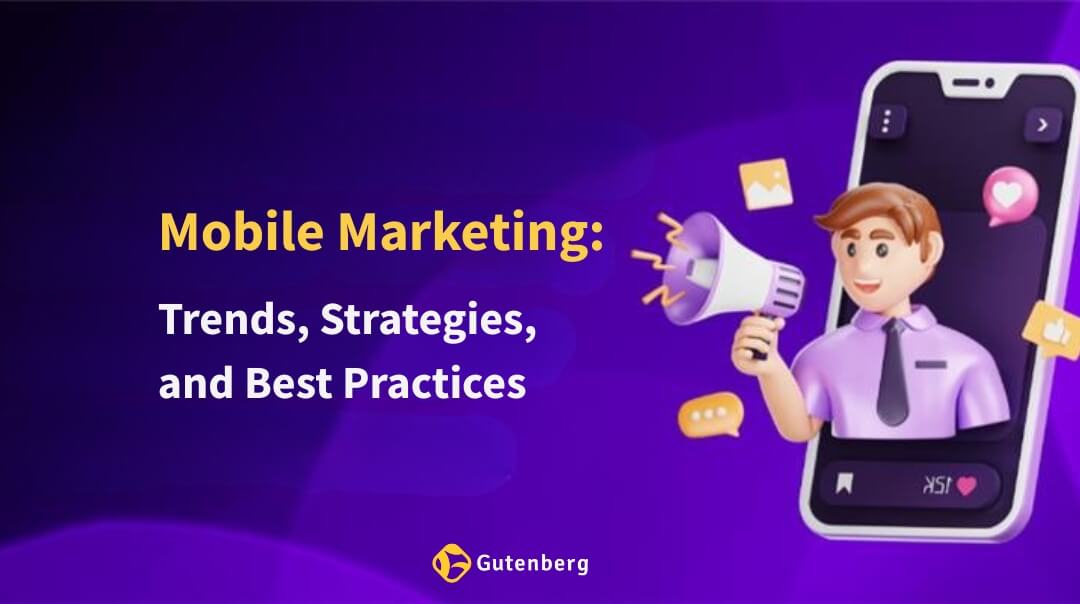Did you know that over 60% of global web traffic comes from mobile devices? With users spending an average of 4.8 hours per day on their smartphones, businesses that fail to optimize mobile are missing out on a massive opportunity. Mobile marketing strategies are no longer optional; they are essential for growth and engagement.
As mobile usage continues to rise, brands must prioritize mobile marketing optimization to ensure a smooth experience for users. In this blog, we’ll explore key mobile marketing trends, best practices for mobile SEO optimization, and how businesses can enhance their mobile advertising strategies for better results.The Rise of Mobile Marketing
Mobile marketing has become an important part of user connectivity. The increasing reliance on smartphones means brands need to adopt mobile marketing strategies that engage users effectively and drive conversions.
Growth in Mobile Usage and Consumer Behavior
With billions of smartphone users worldwide, mobile devices are now the primary medium for accessing the internet. People use their phones for shopping, entertainment, and communication, making mobile an essential touchpoint for brands.
- Mobile commerce is growing rapidly, with mobile sales accounting for nearly 73% of total e-commerce transactions.
- Voice search is on the rise, increasing the importance of mobile search engine optimization.
- Users expect fast, mobile-friendly websites with seamless navigation for an optimal experience.
Key Mobile Marketing Trends in 2025
Marketing technology is evolving rapidly, introducing new trends and opportunities for businesses . Following are a few important marketing trends companies need to take care of:
- AI-powered chatbots and automation are streamlining customer interactions by providing instant support.
- Short-form videos and interactive ads are gaining traction, offering higher engagement rates.
- Privacy regulations are reshaping mobile advertising strategies, emphasizing transparency and user consent.
Why a Mobile-First Approach is Crucial
With Google prioritizing mobile-friendly websites, brands must adapt or risk losing visibility and engagement.
- Google’s mobile-first indexing makes mobile SEO optimization a necessity for better search rankings.
- Slow-loading mobile pages contribute to high bounce rates and lost sales.
- A well-optimized mobile user experience improves customer retention and brand loyalty.
Mobile SEO and Search Engine Optimization
Search engine rankings can make or break a business’s online visibility. Mobile SEO optimization ensures that websites rank higher and attract mobile users looking for relevant products and services.
Why Mobile SEO is Critical for Rankings
With mobile-first indexing, search engines primarily evaluate the mobile version of a website for rankings. Without proper mobile search engine optimization, businesses risk lower visibility and reduced traffic.
- Google prioritizes mobile-friendly websites, affecting overall search rankings.
- Websites that aren’t optimized for mobile see a drop in organic traffic and engagement.
- Slow mobile site speeds negatively impact user experience and conversion rates.
Best Practices for Mobile Search Engine Optimization
Implementing effective mobile SEO optimization techniques can enhance website performance and user engagement. The following are some of the best practices for mobile SEO:
- Use a responsive design to ensure a consistent mobile user experience across devices.
- Optimize images and reduce excessive code to improve loading times.
- Use Accelerated Mobile Pages (AMP) to boost site speed and visibility.
- Optimize voice search by using natural language keywords and structuring content for featured snippets.
Local SEO for Mobile Users
Local searches on mobile devices are growing exponentially. Optimizing for mobile search engine optimization helps businesses appear in relevant local search results.
- Over 70% of mobile searches have local intent, highlighting the need for local SEO strategies.
- Optimizing Google My Business listings can increase local visibility and customer engagement.
- Incorporating location-based keywords helps businesses rank higher in local searches.
Enhancing Mobile User Experience (UX)
A smooth mobile user experience is key to retaining visitors and driving conversions. Poor design or slow performance can push users away. The following are the ways companies can improve their mobile user experience:
Responsive and User-Friendly Design
A mobile-friendly design ensures that websites look and function well on different screen sizes. User experience plays a vital role in customer satisfaction and conversions.
- Responsive design adapts to various devices, improving usability.
- Clear navigation and well-placed CTAs make it easier for users to take action.
- Avoiding intrusive pop-ups prevents frustration and improves engagement.
Speed and Performance Optimization
A slow website can negatively impact search rankings and user satisfaction. Fast-loading pages contribute to a better mobile user experience.
- Compressing images and minimizing unnecessary scripts enhances page speed.
- Using Content Delivery Networks (CDNs) ensures faster content delivery.
- Enabling caching reduces loading times for returning visitors.
Optimizing Content for Mobile Users
Mobile content should be easy to read and engaging for on-the-go users. Formatting and readability are crucial for user retention.
- Short paragraphs and bullet points improve readability on small screens.
- Engaging visuals and videos enhance content appeal.
- Text should be legible without zooming to ensure accessibility.
Mobile Advertising Strategies
Paid mobile advertising is an essential component of mobile marketing strategies. With more users engaging on mobile platforms, businesses must leverage the right advertising techniques to maximize reach.
Effective Paid Mobile Advertising Strategies
Targeted mobile ads can drive traffic and conversions when executed correctly.
- Google Ads and Facebook Ads provide high-performing platforms for mobile advertising.
- In-app advertisements engage users while they are actively using mobile apps.
- Retargeting campaigns help re-engage users and increase conversion rates.
Personalization and Targeting in Mobile Ads
Personalized mobile ads create more meaningful connections with users and improve engagement.
- AI-powered ad targeting tailors content based on user behavior.
- Location-based ads increase relevance by targeting specific geographic areas.
- Behavioral data enables brands to optimize campaigns for better ROI.
Social Media’s Role in Mobile Marketing
Social media platforms are integral to mobile marketing optimization, providing brands with direct access to mobile users.
- Mobile-first platforms like Instagram, TikTok, and Snapchat dominate user engagement.
- Stories and reels offer immersive advertising opportunities.
- Influencer partnerships enhance brand credibility and reach.
Gutenberg & Mobile Marketing
At Gutenberg, we help businesses unlock the full potential of mobile marketing with cutting-edge strategies and data-driven insights. Our expertise in mobile SEO, advertising, and user experience optimization ensures that brands stay ahead in today’s mobile-first landscape. By leveraging advanced analytics and targeted mobile campaigns, we enhance user engagement, drive higher conversions, and maximize ROI. Whether it’s refining mobile search visibility, optimizing ad performance, or crafting personalized mobile experiences, we empower businesses to succeed in an increasingly mobile-driven world.
Conclusion
A well-planned mobile marketing strategy is essential for business success in a mobile-first world. Brands that prioritize mobile SEO, advertising strategies, and seamless UX will gain a competitive edge.
Staying ahead of mobile marketing trends requires expertise and innovation. By partnering with Gutenberg’s mobile marketing specialists, businesses can future proof their strategies and unlock long-term growth. The time to optimize is now—embrace mobile marketing today to lead tomorrow.
FAQs
Q1. Why is mobile SEO important for business growth in 2025?
Mobile SEO helps businesses improve their visibility on search engines, especially with Google using mobile-first indexing. Optimizing for mobile improves rankings, attracts more users, and boosts conversion rates on smartphones and tablets.
Q2. How does mobile user experience impact website performance?
A seamless mobile experience improves usability, lowers bounce rates, and encourages users to stay longer. Responsive design, fast loading times, and easy navigation all contribute to stronger engagement and better business outcomes.
Q3. What are the top trends in mobile advertising this year?
Key mobile advertising trends include AI-powered targeting, short-form video ads, location-based personalization, and in-app advertising. These formats are more interactive and better aligned with user behavior on mobile devices.
Q4. How can businesses optimize content for mobile users?
To optimize content for mobile, companies should use short paragraphs, bullet points, readable fonts, and engaging visuals. Voice search optimization and structured data also help content appear in featured results on mobile devices.
Q5. Which agencies help businesses with mobile marketing strategy?
Many businesses partner with specialized marketing agencies to improve their mobile presence. Gutenberg supports companies with mobile SEO, advertising strategies, and user experience optimization to help brands grow in a mobile-first world.
















